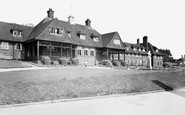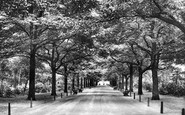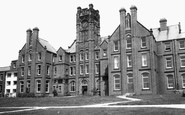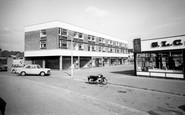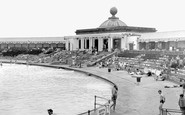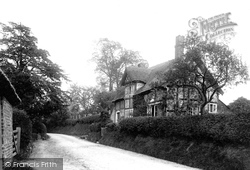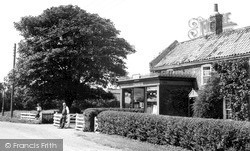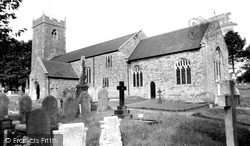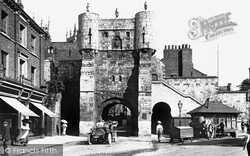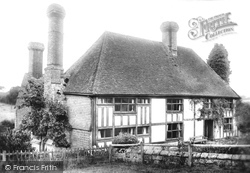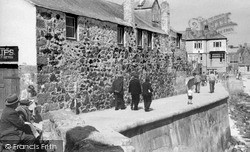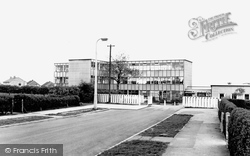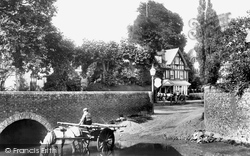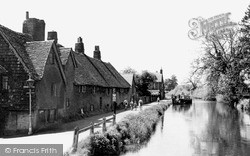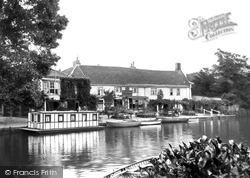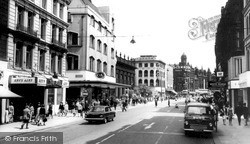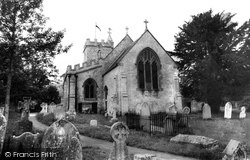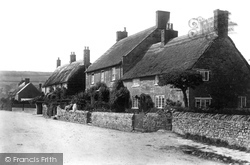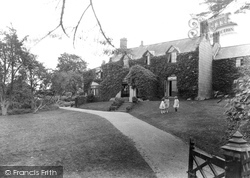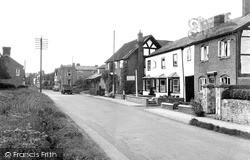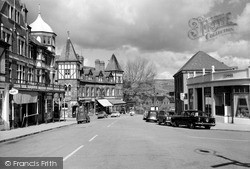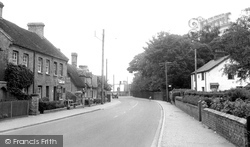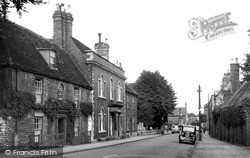Photos
Sorry, no photos were found that related to your search.
Maps
66 maps found.
Books
Sorry, no books were found that related to your search.
Memories
183 memories found. Showing results 1 to 10.
Very Fond Memories Of Lmtoh Ward 5
I was in St Giles Hospital, Camberwell, and was transferred to Lord Mayor Treloars Orphopaedic Hospital, Alton because the surgeon was a good friend of the main Consultant Surgeon at Alton who was, I think Mr ...Read more
A memory of Alton in 1959 by
Lavender Hill
My uncle and aunt had a house in Beaufoy Rd, number 5, tucked into the corner next to the Fish & Chip shop. When I was home on on leave from sea that is where I lived, for about 5 years. Usually up the smoke to the jazz clubs I ...Read more
A memory of Battersea in 1954 by
Happy Days In Heswall (Rlch)
I guess I was on the same bus as Gina and her life long friends who I also remember. The Liverpool girls would meet up on a Sunday night to catch the ferry to Birkenhead and the bus to Heswall. If the girls from the Isle ...Read more
A memory of Heswall in 1969 by
Above Shop Flats
1963: We were so desperate for somewhere to live when we got married that we almost signed up for one of the upstairs flats above the shops. The flats were brand new and looked very attractive back then. The the reality set ...Read more
A memory of South Wigston by
Delamere By Sid Grant
The Jewish Fresh Air Home and School was founded in 1921 by Miss Margaret Langdon, MBE, MA (1890-1980) and located at Blakemere Lane, Delamere near Norley, in the beautiful Cheshire countryside. My time spent there was from ...Read more
A memory of Delamere in 1930 by
Shandon Rhu School
I came across this by chance - I was at school with you, Fraser. I remember coming to an amazing birthday party at your house where your mum had put on an incredible spread, including a plate of Kit Kats which seemed like such a ...Read more
A memory of Shandon by
Rescue Of 5 Small Children From A Bombed Flat
I have traced a newspaper report telling of the rescue of myself and my four siblings when houses in Ryefield Avenue, Hillingdon were bombed in 1943. The report tells of one of the rescuers being a ...Read more
A memory of Hillingdon in 1943
Gervis Road Collyhurst Flats 1945 1964
My name is Tom Smith. I was born in 17 Gervis Rd, Collyhurst Flats in August 1945. My dad was Jack Smith and my mam was Ada; there were 6 kids, John, Mary, James, (me) Andrew, and Arthur. To me the flats ...Read more
A memory of Collyhurst in 1945 by
Happy Youth
I first found out about when I moved to Great Horton in Bradford about 1952. I met a boy called Philip Tempest who lived in a house near by, we became life long friends. His parent took me on holiday with them to a cottage they owned ...Read more
A memory of Nesfield in 1950 by
Happy Days....Jeux Sans Frontieres
One of many events to take place in this amazing pool was the 1975 International heat of Jeux Sans Frontieres. Stuart Hall and Eddie Wareing compered on a late summers evening when competitors from all over Europe ...Read more
A memory of Southport in 1975 by
Captions
145 captions found. Showing results 1 to 24.
This was almost certainly built by Richard Plat, the mason who was responsible for Mobberley church tower, erected at the same time.
Broad Street is a later medieval planned extension of the market place, which is beyond the end houses.
Trusthorpe Post Office is on the road to Thorpe, and is in a late Victorian projection from the left bay of a late 18th-century small farmhouse.
Trusthorpe Post Office is on the road to Thorpe, and is in a late Victorian projection from the left bay of a late 18th-century small farmhouse.
St Augustine's church is of the Early English period, with a later Perpendicular embattled tower with pinnacles. It was restored in 1860.
York was a late comer to electric trams: the system did not open until January 1910, and even then it only lasted 25 years.
Situated on the High Street is The Studio, a Wealden Hall House, with a later gable on the left-hand side. This picture was taken before restoration.
This half- timbered Wealden Hall House has a late 16th- century sandstone facade at the back.
This view shows the narrow promenade without its railings, which were added in a later more safety-conscious age.
A typical example of a late-fifties/ early-sixties school and college building; it seems monotonous and characterless.
A late 19th-century advertisement for the George Hotel reads: 'This house, being in the centre of the picturesque scenery of Pangbourne, affords every accommodation for tourists, boating parties or
A late 19th-century advertisement for the George Hotel reads: 'This house, being in the centre of the picturesque scenery of Pangbourne, affords every accommodation for tourists, boating parties
The Rush Cutters has a late 16th-century core, evident in the octagonal brick chimneys on the right and the massive stack behind the left hip. The houseboat is a real period piece.
It was designed by Halfpenny, with a later 1839 tower and square spire by Chantrell. The street elevations show multiple bays with doorways with Gibbs' surrounds.
A late 19th-century advertisment for the George Hotel reads: 'This house, being in the centre of the picturesque scenery of Pangbourne, affords every accommodation for tourists, boating parties or anglers
Osmington is an ancient manor founded by the Saxon King Athelstan, though most visitors pass through the village to see the chalk figure of a later king, George III, carved on the downlands to the north
Little remains of this medieval fortification, and a later manor house was 'slighted' in 1645 during the Civil War.
The Saxons and the Danes fought two battles near to Charmouth, though the village's history recalls a later defeat, for Charles II passed this way as a fugitive after the Battle of Worcester.
York was a late comer to electric trams: the system did not open until January 1910, and even then it only lasted 25 years.
There are a number of lovely timber-framed buildings in this village, and many more that were once of timber, until a brick façade was added at a later date.
The prominence of brick buildings here demonstrates a late flourish in the development of this town: the railway brought both bricks and visitors to the town.
The small post office occupies a late 19th-century cottage. Next door is a small thatched cottage similar to a number of others in the village.
The Rush Cutters has a late 16th-century core, evident in the octagonal brick chimneys on the right and the massive stack behind the left hip. The houseboat is a real period piece.
Number 18, on the left, was refronted in the 1770s in brick with Venetian windows (with their centre part arched), and a later Greek Doric- style porch added.
Places (1)
Photos (0)
Memories (183)
Books (0)
Maps (66)






















